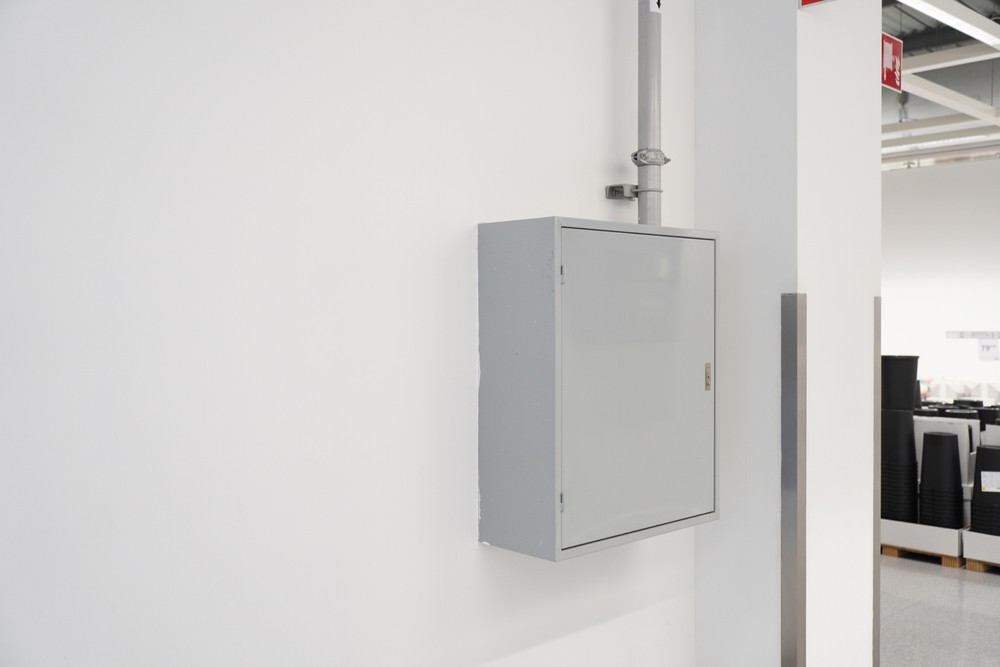Circuit breakers are essential components of any electrical system. They protect the system from overload and short circuits, ensuring that it maintains working order without fault or (in the worst case) dangerous failures.
One of the most essential types of breakers is the Arc Fault Circuit Interrupter (AFCI), a device that protects the system from (as the name implies) arc faults.
This article compares AFCIs against typical Ground Fault Circuit Interrupters (GFCIs), discusses the broader world of system circuit breakers, and explains why and when you need an AFCI in your building.
What is an Arc Fault?
When wires become damaged or degraded, they can cause unintended interactions between system components. An arc fault is when an unintentional electricity discharge jumps between two conductors, typically related to damaged components.
Typically, a short circuit involves an electrical charge finding the shortest path to the ground. On the other hand, arc faults involve electricity arcing between wires with significant heat and light–an obvious fire hazard.
Arc faults can come about based on a few common factors:
- Damaged wires and cords. A fray in a wire or an exposure due to damaged insulation exposes wires to the air. Two charged wires (a wire and another conductor) can cause an arc fault. Penetration by nails or screws can also damage a wire and cause an arc fault.
- Improper connections. If a wire isn’t correctly connected to a terminal or appliance, a gap can occur that could lead to an arc fault.
Arc Fault Interrupters vs. Standard Circuit Breakers vs. Ground Fault Circuit Interrupters
An arc fault interrupter is part of a more prominent family of “interrupters” meant to immediately halt electricity flow through wires where a fault has occurred. A “fault,” in this case, is an overload or short circuit.
Standard Circuit Breakers
A standard circuit breaker can detect changes in the electrical systems related explicitly to overloads and short circuits. Once detected, the break “trips” and cuts electrical flow to the affected area before damage can occur.
Arc Fault Circuit Interrupter (AFCI)
An AFCI protects against art faults. An AFCI detects the arc of electricity based on different signatures of arcing electricity within a system (including measuring disruption in electrical flow, heat generation, or other signs unique to an arc fault). The AFCI will continually monitor the system to ensure it picks up on any sign of the issue.
Once an arc fault is detected, the AFCI trips and cuts off electrical current to the affected area. This trip is almost instantaneous, happening within milliseconds. This will stop the arc before it gets hot enough to start a fire.
Ground Fault Circuit Interrupters (GFCI)
As the name suggests, a GFCI protects against ground faults (when an overloaded or exposed circuit allows electrical flow to the ground–whether through another component, an appliance, or a person. This is crucial for most buildings because they prevent severe damage or bodily harm related to, for example, accidents involving appliances, outlets, and moisture.
These breakers are installed in outlets in bathrooms, kitchens, and garages.
How Do AFCIs Work?
While circuit breakers have been a staple in many homes and buildings for decades, the modern technologies of GFCIs and AFCIs have surpassed them in terms of reliability and safety. AFCIs are particularly useful in preventing otherwise avoidable fires due to damaged wires.
An AFCI works through a set of standard capabilities:
- Arc Fault Detection: AFCIs can detect changes in a wire's current that are unique to an arc fault versus a ground fault. This includes rapid changes in current or voltage.
- Current Interruption: The AFCI interrupts the current within milliseconds, cutting off any potential arcing before exposing flammable building materials.
Additionally, there are more advanced interrupters, such as a combination of the features of an AFCI and a GFCI, to stop both types of faults.
Types of AFCIs
As with any technology, there are several types of AFCIs:
- Branch/Feeder AFCIs: These are the original AFCIs typically installed at the main electrical panel. They protect the entire branch circuit.
- Combination AFCIs (CAFCIs): CAFCIs protect both series and parallel arc faults and are designed to offer more comprehensive protection than branch/feeder AFCIs.
- Outlet Circuit AFCIS: These are installed at the outlet level rather than the main panel. They’re usually found in bathrooms, kitchens, or any location with moisture or high-demand appliances.
- Dual-Function AFCIS: These devices combine AFCI and GFCI (Ground Fault Circuit Interrupter) protection in a single unit, offering arc and ground fault protection. This dual functionality is ideal for areas where both types of protection are beneficial, such as kitchens and bathrooms.
Why Do I Need an Arc Fault Circuit Interrupter?
Does your building need an AFCI? It may be based on several different factors:
- Safety: AFCIs can provide a different level of protection than just breakers or GFCIs. As such, many builders and developers install AFCIs even if the building code doesn’t require it.
- Building Codes: Some building codes require AFCIs as dictated by standards like the National Electric Code. Most homes or buildings will require AFCIs.
- Older Building Renovations: AFCIs aren’t common in older buildings, which means they are much more prone to electrical fires. During maintenance, renovation, or upgrading, you’ll likely want to install AFCIs in new or existing wiring to prevent fires and future-proof the facility.
Test and Outfit Your Electrical Systems with MTA Engineers
AFCIs are a standard part of any electrical system and play a broader role in industrial safety regulations. If you’re a California electrician or contractor performing regular building and regulation inspections, trust MTA Electrical Engineering for your testing needs including arch flash hazard analysis.

